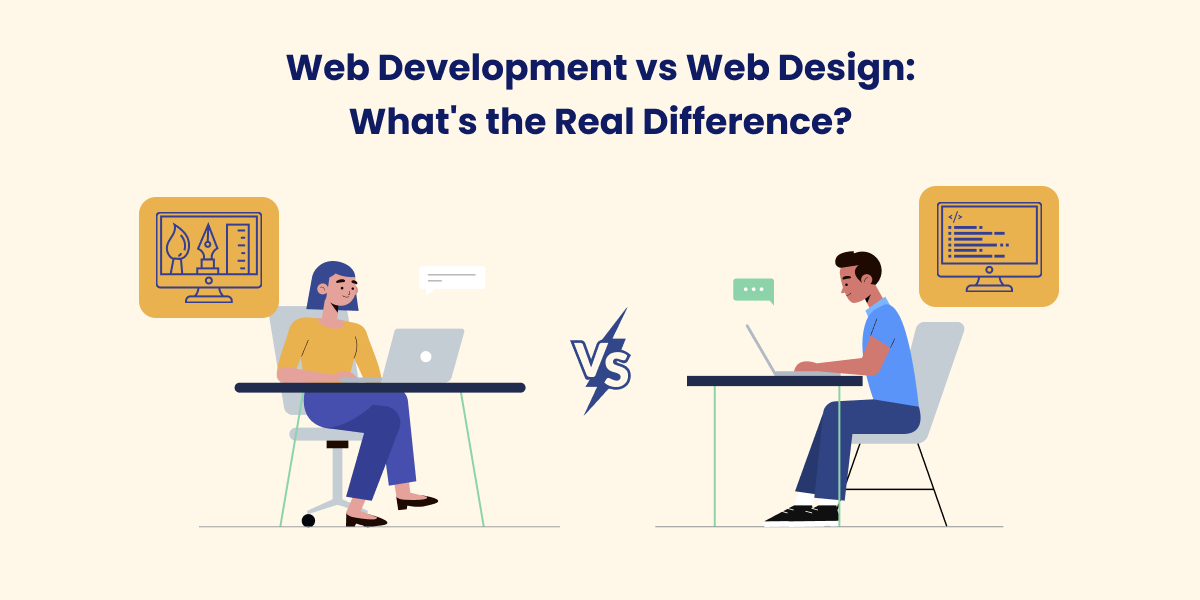Mobile App Architecture: Layers, Types, Principles with Examples
- By Ankush
- 19-02-2025
- Mobile Apps

Mobile applications are now essential for accessing the digital world. With smartphone users projected to reach 7.7 billion by 2028, mobile platforms are increasingly dominant. Mobile devices accounted for 59% of global internet traffic in late 2023, and 257 billion apps were downloaded that same year, highlighting the central role of apps in how people interact with products and services. For businesses, a mobile app is therefore a necessity.
A well-designed architecture is what separates an impactful app from one that is simply adequate. This guide will explore mobile app architecture, covering its definition, layers, principles, factors, types, and examples, providing the knowledge needed to architect enterprise-level mobile apps.
Mobile app architecture serves as the blueprint for building successful applications. Creating a robust, scalable, and secure architecture is crucial as technology advances.
In 2025, trends like cross-platform frameworks, modular designs, and cloud-native solutions are becoming more popular. Mobile app architecture involves selecting the appropriate technologies, tools, platforms, and methods to ensure the app operates efficiently, scales to accommodate more users remains secure, and is easy to maintain.
Mobile app architecture is the structural blueprint that dictates how an app is built, defining the rules, processes, and organization of its components. It establishes how elements like the front-end UI, back-end database, and APIs interact to process user inputs and deliver outputs. A well-designed architecture ensures the app functions efficiently, scales effectively, remains secure, and is easy to maintain.
The architecture provides the framework, while the tech stack refers to the specific technologies used to implement each component. Mobile app architecture comprises various components, including UI, APIs, and databases, arranged in layers.
Layers of Mobile App Architecture
Most mobile app architectures consist of three primary layers:
- Presentation Layer: This is the user interface (UI) that users interact with, including screens, navigation, and visual elements. Developers consider factors such as client type, deployment limitations, data format, and visualization mechanisms when designing this layer.
- Business Layer: This layer contains the core application logic that manages tasks such as computations, validations, analytics, and notifications. It processes inputs from the presentation and data layers to prepare responses for the UI.
- Data Layer: This layer handles data storage and retrieval.
Types of Mobile App Architecture
There are three main types of mobile app architectures:
- Layered Architecture: Organizes the application into layers, each responsible for specific functionalities, promoting modularity and separation of concerns.
- Monolithic Architecture: Combines all application components into a single, unified structure.
- Microservice Architecture: Structures the application as a collection of small, independent services, enabling scalability and flexibility.
Mobile App Architecture Patterns
Mobile app architecture patterns provide blueprints for defining the structure, behavior, and interactions of components within app.
Major patterns include:
- Model-View-Controller (MVC): Separates the app into three interconnected components: Model (data management and app logic), View (UI display), and Controller (handles user input and interactions). The MVC architecture is commonly used for iOS apps due to its simplicity.
Well-designed mobile app architecture is crucial for creating robust, scalable, and user-friendly applications, enhancing modularity, security, reliability, and performance.
Most mobile app architectures consist of three layers: presentation, business, and data. These layers help to separate concerns, making the application more modular and maintainable.
- Presentation Layer: This layer, also known as the front end, is the user interface (UI) that users interact with. It includes elements such as screens, navigation, controls, and visual design. Developer focus on what the user sees and feels when using the app, encompassing both the user interface (UI) and user experience (UX). The presentation layer's main job is to enable user interactions by taking input and displaying output from the lower layers.
- Business Layer: This layer contains the core application logic that handles tasks such as computations, validations, analytics, notifications, and background jobs. It manages data exchange, operations, and workflow regulation. The business layer processes inputs from the presentation and data layers and prepares the responses displayed in the UI. It can reside on the server or the user's device, depending on the app's operations and resource usage.
- Data Layer: The data layer is responsible for managing data access and transactions efficiently and securely. It handles data storage and retrieval, including connections to databases and storage systems. The data layer abstracts the physical storage, so other layers don’t need to manage the specifics of databases. This layer includes data utilities, service agents, and data access components to support data transactions, and focuses on the validation and maintenance of data.
There are three primary types of mobile application architecture: layered, monolithic, and microservice. Each has distinct characteristics, advantages, and disadvantages, making them suitable for different scenarios.
- Layered Architecture: This architecture organizes the application into distinct layers, each responsible for a specific function. Typically, these layers include a presentation layer (UI), a business logic layer, and a data access layer. Layered architecture promotes modularity and separation of concerns, which simplifies maintenance and scaling. However, it can lead to tight coupling between layers if not carefully implemented. Layered architecture is well-suited for large, complex applications that require frequent updates. Isolating frontend, business, and data layers enables focused development and accelerates testing cycles for iterative delivery.
- Monolithic Architecture: This architecture structures the entire application as a single, tightly integrated unit. All components, including the user interface, business logic, and data access, are packaged and deployed as a single entity. While it can simplify development and deployment initially, monolithic architecture can lead to scalability and maintainability issues as the application grows. This architecture is best for simple apps with well-defined, stable requirements. With tight coupling, development and deployment can be fast, especially for apps with limited scope and low chances of change.
- Microservice Architecture: This architecture breaks the application into smaller, independent services, each responsible for specific functionality. These services communicate through APIs, providing flexibility and scalability. Microservices can be developed, deployed, and scaled independently, making updating and maintaining the application more manageable. However, managing many services can introduce complexity and overhead in coordinating communication. Microservices architecture is ideal for complex apps that require frequent updates and scaling across multiple teams. Decomposing into discrete services enables independent development, deployment, and scaling of components, accelerating iteration for large, evolving applications.
Key Principles of Mobile Application Architecture
Like pillars supporting a building, architectural principles provide foundational guidance for constructing a mobile app that is stable, scalable, and prepared for future growth. Important architectural principles to consider when designing mobile apps:
Principles Summary
- Flexibility The architecture can adapt to changing requirements and new technologies.
- Maintainability The app is easy to maintain via modularity, loose coupling, and encapsulation.
- Reusability Components and modules can be reused across applications.
- Security Data and identity are protected through access controls and encryption.
- Performance The app delivers speed, reliability, and resource efficiency.
- Sustainability The architecture supports continuity over changes and future growth.
- Extensibility New capabilities can be added via plugins, extensions, and integrations.
- Testability Components can be easily tested in isolation.
- Intuitiveness The architecture follows established and familiar patterns.
- Portability The app can be deployed on different mobile platforms.
Several factors influence the design of a robust mobile app architecture, including device type, user interface, push notifications, and navigation methods.
Key Factors to Consider:
- Device Type: The type of device determines the hardware capabilities and screen sizes the application needs to support. Designing an app for both smartphones and tablets requires accommodating different screen resolutions, DPI, CPU characteristics, RAM, storage space and aspect ratios.
- Development Frameworks: Selecting the appropriate framework impacts development and maintenance. Cross-platform frameworks, like React Native or Flutter, allow code deployment across multiple platforms. Platform-specific frameworks such as Swift for iOS or Kotlin for Android may be preferable if native experience and performance are a priority.
- Bandwidth: Available bandwidth affects how the app communicates with servers and fetches data. Minimizing data usage is important in areas with limited internet connectivity. For a video streaming app, adaptive bit streaming can adjust video quality based on network speed, ensuring smooth playback even in low bandwidth conditions.
- Network Fluctuations: Mobile networks are subject to signal variations that can impact app performance. Gracefully handling these fluctuations is essential for a seamless user experience. Implementing caching mechanisms to store frequently accessed data locally can reduce reliance on real-time network requests and mitigate temporary outages.
- User Interface: The UI should be intuitive, visually appealing, and consistent across devices. Easy navigation, search functionality, and appealing product displays enhance the shopping experience for users.
- Navigation Method: The method should align with the app's complexity and user preferences. A news app might use tab-based navigation for quick access to sections like top stories, sports, and entertainment.
- Real-Time Updates vs. Push Notifications: The choice depends on the app's nature and the importance of timely information. Messaging apps require real-time updates for instant communication, whereas news apps might use push notifications for breaking news or personalized updates.
Example of modern mobile application architectures
Modern mobile app architectures include Android, iOS, hybrid, and enterprise architectures. Understanding these examples helps in weighing the trade-offs between performance, development costs, time to market, and maintainability.
- Android Mobile App Architecture: Typically employs the MVVM pattern, using frameworks like Jetpack for development. Components such as LiveData and ViewModel are utilized to manage lifecycle awareness and data persistence, ensuring a responsive and scalable app. The most commonly accepted architecture for Android is Clean Architecture, built on layers and inversion of control.
- iOS Mobile App Architecture: Often uses the MVC or MVVM design patterns. Apple's SwiftUI framework is popular for its declarative syntax and real-time previews, facilitating rapid development of responsive and intuitive user interfaces that adhere to modern design principles. The Combine framework enables reactive programming, streamlining data flow and event handling.
- Hybrid Mobile App Architecture: Combines web and native app development, enabling cross-platform apps built with web technologies like HTML, CSS, and JavaScript. While offering broad platform compatibility and faster time-to-market compared to native apps, hybrid apps may have performance limitations and restricted access to native APIs.
- Enterprise Mobile App Architecture: Addresses the specific needs of large-scale business applications, emphasizing security, scalability, and integration with existing systems. Enterprise mobility platforms like SAP Mobile Platform, IBM MobileFirst, and Oracle Mobile Cloud provide tools and services for building, deploying, and managing enterprise-grade mobile apps with security features like data encryption, authentication, and role-based access control.
Selecting the right mobile app architecture is critical as it impacts user experience, performance, scalability, security, and overall app success. The right architecture helps balance client-server communication and offline support, determines the granularity of components, and manages the complexity of transitioning to micro services.
Mobile application architecture is the foundation upon which successful and sustainable apps are built. Understanding the key elements – layers, types, principles, and influential factors – empowers developers and businesses to make informed decisions that align with their specific needs and goals.
By carefully considering device type, bandwidth constraints, UI/UX requirements, and the need for real-time updates, architects can craft solutions optimized for performance, scalability, and user satisfaction. The choice between layered, monolithic, or microservice architectures should be guided by the complexity of the application, the development timeline, and long-term maintenance considerations.
Adopting architectural principles like separation of concerns, single responsibility, and dependency inversion promotes maintainability and testability, ensuring the app remains adaptable to future changes. Examples like Android's MVVM approach, iOS's MVC or MVVM patterns with SwiftUI, hybrid development, and robust enterprise solutions showcase the diverse options available.
Ultimately, selecting the right mobile app architecture is a strategic decision that requires balancing various factors to create a product that not only meets current demands but is also poised for future growth and innovation. With a well-defined architecture, developers can unlock the full potential of mobile technology and deliver exceptional user experiences.
To further emphasize, remember that mobile app architecture is not a one-size-fits-all solution. It requires continuous evaluation and adaptation as the mobile landscape evolves. Emerging trends like serverless computing, edge computing, and AI integration will continue to shape architectural patterns.
Prioritizing security, data privacy, and compliance with industry standards is paramount. Regularly review and update the architecture to address vulnerabilities and maintain user trust. By embracing a forward-thinking approach to mobile app architecture, businesses can leverage technology to gain a competitive edge and deliver value in an increasingly mobile-centric world.





